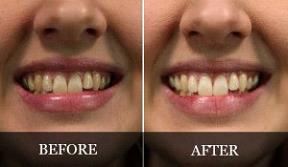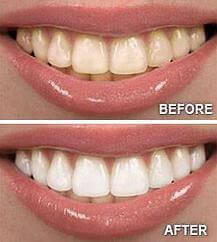Perhaps you've read something about it on the internet, or maybe you've noticed the bright smile of a friend who recommends it, oil pulling is a growing trend. It's not new, but if you're wondering what it is, consider this; this oral therapy dates back 3,000 years to a traditional Indian system of Ayurvedic medicine. It involves taking a tablespoon of oil, usually coconut, sunflower, or sesame oil, and swishing it in your mouth about 20 minutes before spitting it out.
Does Oil Pulling Really Help?
Studies show that oil pulling helps guard against bad breath, plaque, gingivitis, and even may help prevent eczema breakouts. Many people swear the difference in their smile is like night and day when comparing the effects of oil pulling before and after.
It's a good thing for anyone whowants to pay attention to their oral hygiene, and oil pulling does not harm your teeth. Microorganisms in your mouth consist of a single cell, and the cells are covered with a fatty or lipid, membrane. When these microorganisms come into contact with the oil, they will naturally adhere to each other.Oil pulling removes bacteria from the teeth with much less friction, and its possible oil residue may block pores in the dentin, covering nerve endings that reduce sensitivity.
True Experiences of Oil Pulling Before and After
"With a friend's suggestion, I decided to try oil pulling to help whiten my teeth and to treat my eczema, but oil pulling for 20 minutes every day is no easy task. I take a tablespoon of coconut oil, put it my mouth and start swishing. Meantime, I take a shower, load the dishwasher, and pack a lunch for the day, before spitting the oil out into the trash can and brushing my teeth. When I first started oil pulling, I could not handle the oil in my mouth for more than 5 minutes. However, after doing it for a couple of weeks, I've managed to keep swishing it for the full 20 minutes that's recommended. How did it work for me?
How well it works:
I have seen marked improvements with my eczema breakouts that I usually get on my elbows and knees. The daily itching that used to bother me so much have diminished dramatically with the exception of one knee. Although the itch sometimes returns, due to environmental issues, this is the most rewarding result that I've had from oil pulling.
I researched several websites that claimed oil pulling whitened teeth, but I didn't see much improvement in mine. This might be because I already took pretty good care of my teeth before using the product.” -- Ava
Oil Pulling Before and After with Teeth

“I decided to try oil pulling as a natural alternative to whiten my teeth as opposed to commercial products that use harsh chemicals. Just brushing my teeth wasn't good enough to keep the plaque from building up on my teeth, and after a few hours, I could feel a grimy feeling on my teeth. My breath wasn't as fresh as I would like it to be, and since I prefer natural products, store bought mouth wash was out of the question. I followed the instructions for a week and could not believe the difference it made to my smile the very first day! I only wish I had known about this earlier when I was wishing I had brighter teeth." – Elizabeth

"Just have a look at the difference of oil pulling before and after about a week's worth of treatment. I'm going to continue treating my teeth to oil pulling four times a week to keep them this way." -- Rebeca
How to Do Oil Pulling
- Measure 1 to 2 teaspoons of the oil and put it into your mouth. My preference is 2 teaspoons of organic coconut oil and a few drops of essential oil brushing blend into the mix. Let the oil melt in your mouth before swishing it around your mouth and teeth.
- Continue swishing for about 20 minutes, because this is how long it takes to break down the plaque and bacteria, but not so long as to allow your body to re-absorb the toxins and bacteria. The oil will become thicker as it mixes with your saliva, and will turn a milky white before you spit it out.
- After 20 minutes, spit the oil into a trash can. You'll not want to use the sink, because like all oil, the spent oil could clog the drain. Try not to swallow any of the oil, it's not good for you to consume.
- Rinse with warm water a few times to remove any leftover oil residue from your mouth.
- Follow up by brushing your teeth to make sure any remaining residue is removed from your teeth.
Tips to Follow
- Use coconut oil: Even though you can get the same benefits with sunflower or sesame oil, coconut oil has the added benefit of lauric acid, which is well-known for its anti-microbial agents. Coconut oil may also help prevent tooth decay, making it more effective.
- Don't work too hard swishing: Start off with just 5 minutes a day and work your way up to 20 minutes a day. A gentle pushing, swishing, and sucking through the teeth is all that's required.
- Do not swallow: If you find yourself swallowing some of the oil, spit it out and try using a smaller amount.
- Do not skip brushing and flossing: Oil pulling should never replace the traditional home oral care, and because it doesn't reverse the effects of tooth decay, you should continue all routine dental visits
- Expert tip: Sunflower and coconut oil aren't the only oils with dental health benefits. Try rubbing some vitamin E oil on the surface of irritated and inflamed gums. It's easily absorbed, rich in antioxidants, and helps maintain healthy gum tissue.
